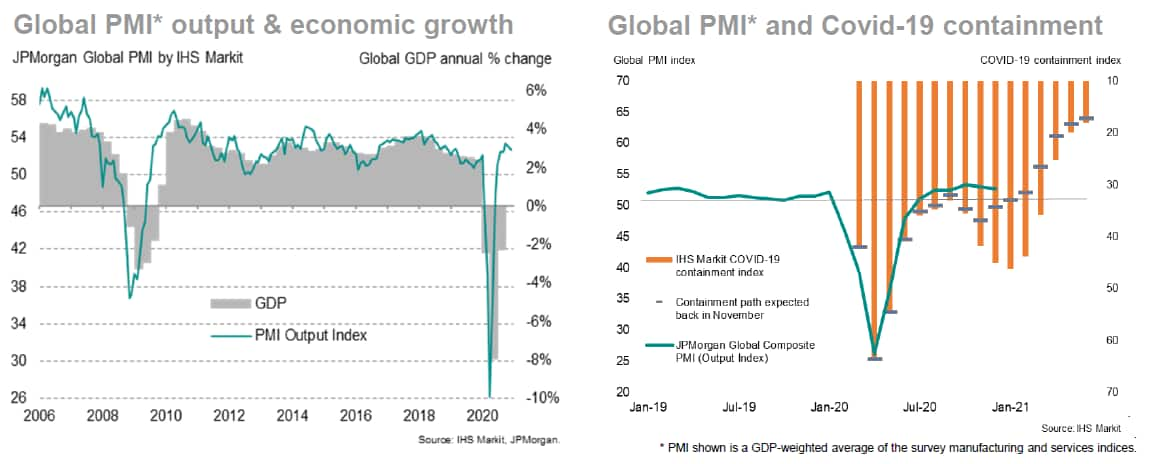Global growth slows at end of 2020 as COVID-19 infections rise
The following is an extract from IHS Markit's monthly PMI overview presentation. For the full report please click on the link at the bottom of the article.
Global PMI falls for second month running in December
The JPMorgan Global PMI™ (compiled by IHS Markit with data collected 4th-21st December) edged down from 53.1 in November to 52.7 in December, its lowest since September. The decline indicates that the pace of global economic growth slowed for a second month running, as rising coronavirus disease 2019 (COVID-19) cases dampened activity and demand, though output is still indicated to have risen over the fourth quarter as a whole, further recovering from the unprecedented downturn seen in the first half of 2020.
The slower expansion during December occurred alongside renewed measures implemented to fight further waves of virus infections in many countries. IHS Markit's COVID-19 Containment Index has risen from 32 in September to 45 in December, though notably remains well below levels seen earlier in the year (during initial, tighter lockdowns, the index hit 64). The adverse impact on global GDP from the pandemic in the fourth quarter consequently looks considerably less severe than seen during the second quarter. Worse may be yet to come, however, as the Global Containment Index is projected to rise to 46 in January.

Chris Williamson, Chief Business Economist, IHS Markit
Tel: +44 207 260 2329
chris.williamson@ihsmarkit.com
© 2021, IHS Markit Inc. All rights reserved. Reproduction in whole
or in part without permission is prohibited.
Purchasing Managers' Index™ (PMI™) data are compiled by IHS Markit for more than 40 economies worldwide. The monthly data are derived from surveys of senior executives at private sector companies, and are available only via subscription. The PMI dataset features a headline number, which indicates the overall health of an economy, and sub-indices, which provide insights into other key economic drivers such as GDP, inflation, exports, capacity utilization, employment and inventories. The PMI data are used by financial and corporate professionals to better understand where economies and markets are headed, and to uncover opportunities.
This article was published by S&P Global Market Intelligence and not by S&P Global Ratings, which is a separately managed division of S&P Global.
